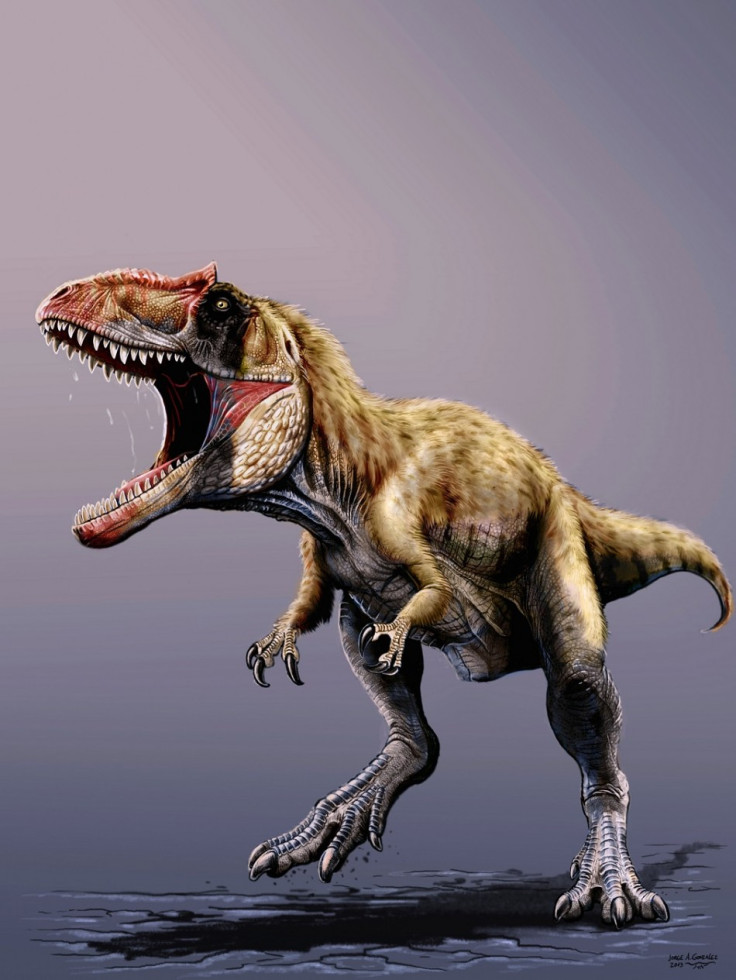Colossal Dinosaur That Terrorised T-Rex Discovered in Utah

A huge carnivorous dinosaur that dwarfed Tyrannosaurus rex has been discovered in Utah.
Siats meeterorum terrorised the T-Rex and kept the species from the top of the food chain for millions of years.
The dinosaur was discovered in Utah's Cedar Mountain Formation and was named after a cannibalistic man-eating monster from Ute tribal legend.
Lindsay Zanno, a palaeontologist from the North Carolina State University, said: "It's been 63 years since a predator of this size has been named from North America. You can't imagine how thrilled we were to see the bones of this behemoth poking out of the hillside."
Siats is one of the three largest ever carnivorous dinosaurs discovered in North America. It lived 98 million years ago alongside the T-Rex, which was much smaller at the time, making it top predator for at least 30 million years.
Published in the journal Nature Communications, researchers say the Siats discovered would have been more than 30ft long and weighed over four tonnes.
However, the bones discovered in Utah were that of a juvenile, leading authors to hypothesis that an adult would have reached around 40ft and weighed over six tonnes.

Zanno discovered Siats with colleague Peter Makovicky in Utah in 2008 and they have spent the last five years analysing the bones. They established it terrorised Utah during the Late Cretaceous period, between 100 million and 66 million years ago.
"Carcharodontosaurs reigned for much longer in North America than we expected," says Zanno, adding that Siats fills a 30 million year gap where the top predator was not known.
Makovicky said: "The huge size difference certainly suggests that tyrannosaurs were held in check by carcharodontosaurs, and only evolved into enormous apex predators after the carcharodontosaurs disappeared."
Zanno added: "Contemporary tyrannosaurs would have been no more than a nuisance to Siats, like jackals at a lion kill. It wasn't until carcharodontosaurs bowed out that the stage could be set for the evolution of T-Rex."
The researchers said they believe far more dinosaur bones are yet to be discovered in Utah - an area of isolation during the Cretaceous period.
"Siats is just the tip of the iceberg; our teams are unearthing a lost dinosaurian ecosystem right here in the badlands of western North America," Zanno said.
© Copyright IBTimes 2025. All rights reserved.






















